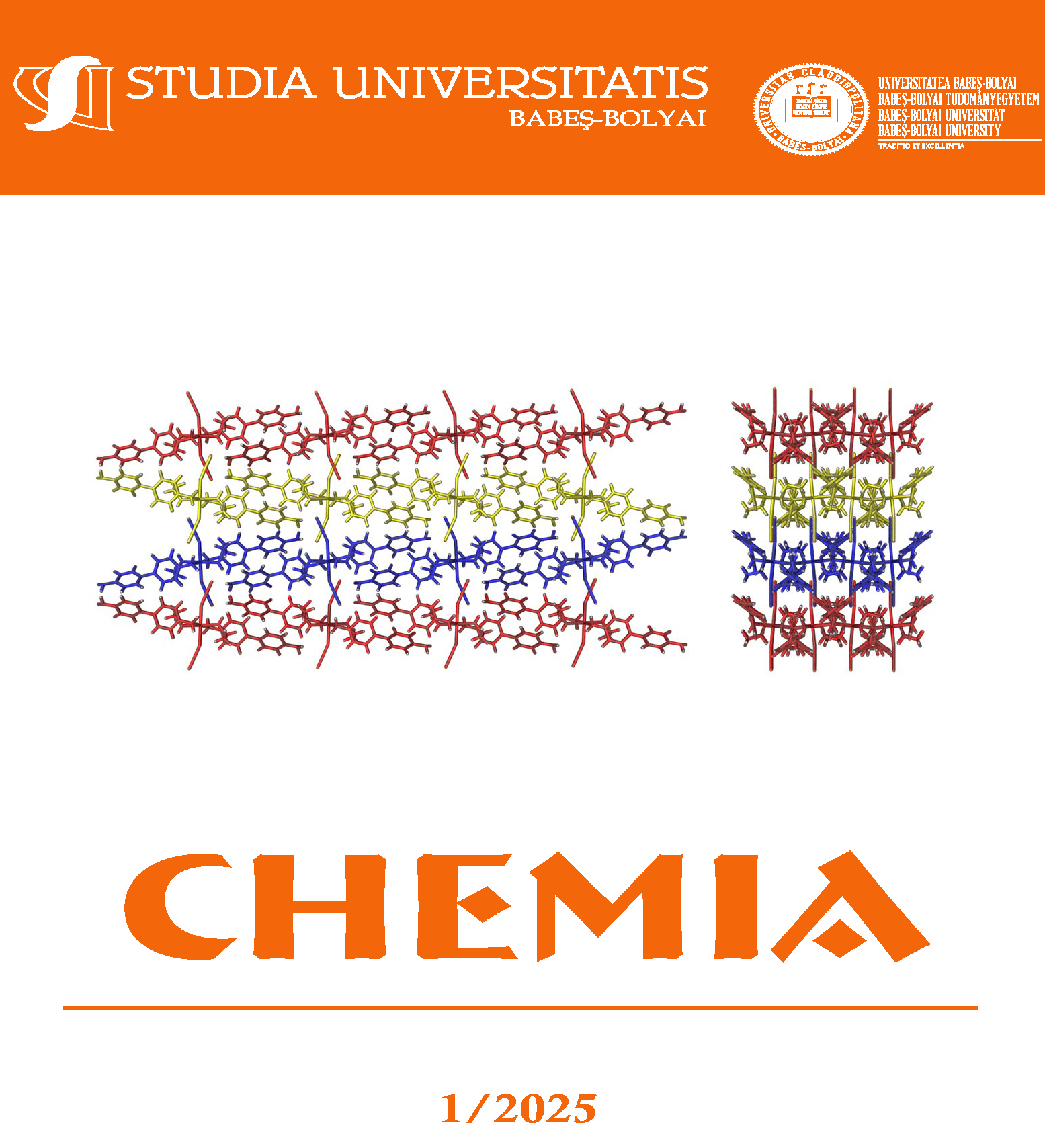SYNTHESIS OF N-DOPED CARBON MATERIALS WITH ULTRA-MICROPOROUS BY ACTIVATIVE RUBIDIUM CHLORIDE
DOI:
https://doi.org/10.24193/subbchem.2025.1.03Keywords:
Ultra-microporous, Activated carbon, Hydrogen adsorption storage, Chenopodium quinoa Willd, rubidium chlorideAbstract
Activated carbon from quinoa straw, an agricultural waste, was prepared by chemical activation using a novel activator, rubidium chloride. The effects of time, temperature and amount of activator on the yield and adsorption properties of quinoa straw activated carbon were also investigated. The results showed that the optimal activation process for quinoa straw activated carbon was: activation temperature 700 ℃, activation time 2 h, and RbCl-QS ratio 1:1. The quinoa straw activated carbon prepared under this process had a yield of 27.18%, an iodine adsorption value of 828.11 mg g-1, a total pore volume of 0.303 cm3 g-1, a major pore size of 0.58 nm, and a specific surface area of 635.59 m2 g-1. At room temperature and pressure, the H2 desorption can reach 3.92 cm3 g-1. quinoa straw activated carbon prepared using RbCl as activator has excellent adsorption and hydrogen storage properties.
References
1. J. W. Ren; N. M. Musyoka; H. W. Langmi; M. Mathe; S. J. Liao; Int. J. Hydrog. Energy, 2017, 42, 289-311.
2. M. Ayvaz; S. İ. Ayvaz; İ. Aydin; Int. J. Hydrog. Energy, 2018, 43, 20271-20283.
3. C. G. Michael; S. K. Eustathios; S. M. Sofoklis; K. Konstantinos; N. P. Efstratios; Comput. Chem. Eng., 2009, 33, 1077-1090.
4. A. Kumar; P. Muthukumar; P. Sharma; E. A. Kumar; Sustain. Energy Technol. Assess., 2022, 52, 102204.
5. P. C. Rao; Y. S. Kim; H. Kim; Y. H. Son; Y. Y. Choi; K. Na; M. Y. Yoon; ACS Sustainable Chem. Eng., 2023, 11, 12656-12666.
6. Y. M. Tang; Y. Z. Liu; Y. H. Zhang; Y. N. Cao; P. P. Song; L. M. Hou; L. X. Peng; Food Sci. Nutr., 2024, 1-13.
7. N. Wang; F. X. Wang; C. Shock; F. B. Fritschi; L. Gao; Z. J. Huang; J. Y. Zhao; Agric. For Meteorol., 2022, 323, 109084.
8. X. L. Zhao; F. Wang; Y. Fang; D. W. Zhou; S. P. Wang; D. Q. Wu; L. X. Wang; R. Z. Zhong; BioResources, 2020, 312, 123512.
9. D. Abril; V. Ferrer; G. Y. Mirabal; B. G. Cabrera; C Segura.; A. Marican; A. Pereira; E. F. Durán-Lara; O. Valdés; Materials, 2022, 15, 4898.
10. C. L. Zhang; H. C. Li; Z. Z. Lin; B. X. Du; X. P. Zhang; Carbon Trends, 2024, 14, 100322.
11. R. S. DeFever; H. M. Wang; Y. Zhang; E. J. Maginn; J. Chem. Phys., 2020, 153, 011101.
12. E. Çetingürbüz; A. Turkyilmaz; Ind. Crops Prod., 2023, 203, 117171.
13. S. Hao; Q. Zhang; Y. Shi; Q. Guo; P. Li; J. Huang; Biomass Conv. Bioref., 2024, 14, 9581–9594.
14. S. Lee; M. E. Lee; M. Y. Song; S. Y. Cho; Y. S. Yun; H. Jin; Carbon Letters, 2016, 20, 32-38.
15. D. Guo; Y. Fu; F. Bu; H. Liang; L. Duan; Z. Zhao; C. Wang; A. M. ElToni; W. Li; D. Zhao; Small Methods, 2021, 5, 2001137.
16. C. Zhou; S. Geng; X. W. Xu; T. H. Wang; L. Q. Zhang; X. J. Tian; F. Yang; H. T. Yang; Y. F. Li; Carbon, 2016, 108 234-241.
17. Y. Gao; Q. Yue; B. Gao; Y. Sun; W. Wang; Q. Li; Y. Wang; Chem. Eng. J., 2013, 217 345-353.
18. B. X. Du; H. C. Li; C. L. Zhang; Q. S. Ji; Heliyon, 2024, 10, e27585.
19. W. Zhao; V. Fierro; N. Fera'ndez-huerta; M. T. Izquierdo; A. Celzard; Int. J. Hydrog. Energy, 2012, 37, 14278-14284.
20. S. Schaefer; V. Fierro; M. T. Izquierdo; A. Celzard, Int. J. Hydrog. Energy, 2016, 41, 12146-12156.
21. B. K. Kızılduman; Y. Turhan; M. Doğan; Adv. Powder Technol., 2021, 32, 4222-4234.
22. T. T. Qin; M. K. Song; K. K. Jiang; J. W. Zhou; W. Zhuang; Y. Chen; D. Liu; X. C. Chen; H. J. Ying; J. L. Wu; RSC Adv., 2017, 7, 37112-37121.
23. H. S. Jang; J. Y. Mun; W. G. Hong; S. M. Lee; J. W. Jeon; C. Y. Lee; H. J. Kim; B. H. Kim; Int. J. Hydrog. Energy, 2020, 45, 10516-10522.
Downloads
Published
How to Cite
Issue
Section
License
Copyright (c) 2025 Studia Universitatis Babeș-Bolyai Chemia

This work is licensed under a Creative Commons Attribution-NonCommercial-NoDerivatives 4.0 International License.



